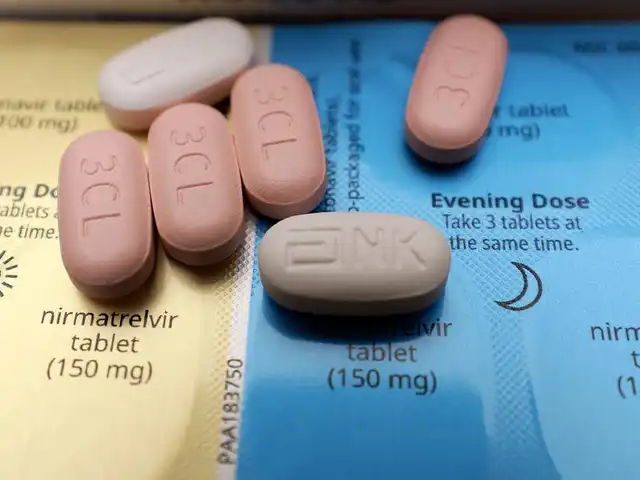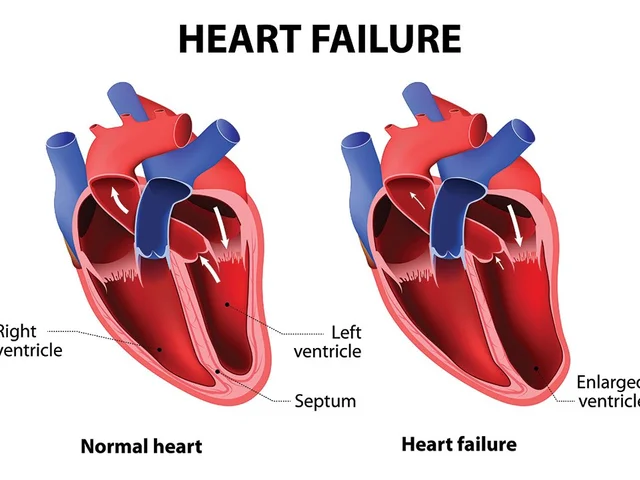Antidepressant Selector
Select Your Symptoms
Side Effect Tolerance
Medical Conditions
Recommended Antidepressant:
When you or a loved one need to pick an antidepressant, the choices can feel endless. Effexor XR (the extended‑release form of venlafaxine) often shows up on the list, but it’s not the only option. This guide breaks down how Effexor XR stacks up against the most common alternatives, so you can see which drug matches your symptoms, lifestyle, and health goals.
Quick Takeaways
- Effexor XR is a serotonin‑norepinephrine reuptake inhibitor (SNRI) with strong anxiety relief but notable withdrawal symptoms.
- SSRIs such as fluoxetine and sertraline tend to have smoother discontinuation but may take longer to lift mood.
- Duloxetine offers similar SNRI benefits and is often preferred for chronic pain.
- Bupropion works differently (norepinephrine‑dopamine), making it a good fit for those worried about sexual side effects.
- Choosing depends on your primary symptoms (depression vs. anxiety vs. pain), side‑effect tolerance, and any existing health conditions.
How to Pick the Right Antidepressant
Before you dive into the drug specifics, ask yourself these five questions. Your answers will guide you toward the class that fits best.
- Is anxiety the main driver of my distress? If yes, an SNRI or a high‑potency SSRI often does the trick.
- Do I have chronic pain (back, fibromyalgia, neuropathy)? Duloxetine and venlafaxine have proven pain‑relief benefits.
- How sensitive am I to sexual side effects? Bupropion has the lowest risk, while many SSRIs and SNRIs can lower libido.
- Am I planning to stop medication soon (e.g., after a short course)? Choose drugs with milder tapering curves, like fluoxetine.
- Do I have medical conditions that limit certain meds (e.g., heart disease, glaucoma, seizures)? Some antidepressants have contraindications you’ll want to avoid.
Side‑Effect Snapshot
Below is a side‑by‑side view of the most talked‑about antidepressants. The table uses Venlafaxine (Effexor XR) as the reference point.
| Drug (Generic) | Class | Typical Daily Dose | Common Side Effects | Onset of Mood Lift (weeks) | Withdrawal Severity |
|---|---|---|---|---|---|
| Venlafaxine (Effexor XR) | SNRI | 75‑225mg | Nausea, insomnia, increased blood pressure, sexual dysfunction | 1‑2 | High - flu‑like symptoms, dizziness |
| Fluoxetine (Prozac) | SSRI | 20‑60mg | GI upset, insomnia, weight loss, sexual dysfunction | 2‑4 | Low - long half‑life smooths taper |
| Sertraline (Zoloft) | SSRI | 50‑200mg | Diarrhea, dry mouth, sexual dysfunction, jitteriness | 1‑3 | Medium - must taper slowly |
| Escitalopram (Lexapro) | SSRI | 10‑20mg | Nausea, fatigue, sexual dysfunction, headache | 1‑2 | Medium - moderate taper recommended |
| Duloxetine (Cymbalta) | SNRI | 30‑120mg | Dry mouth, constipation, increased blood pressure, sexual dysfunction | 1‑2 | High - similar to venlafaxine |
| Bupropion (Wellbutrin) | NDRI | 150‑300mg | Insomnia, dry mouth, tremor, rare seizures | 2‑3 | Low - little to no sexual side effects |
| Amitriptyline (Elavil) | Tricyclic | 25‑150mg | Weight gain, sedation, anticholinergic effects, orthostatic hypotension | 1‑2 | Medium - requires careful taper |

Deep Dive: Each Drug at a Glance
Below you’ll find a short profile for every medication listed above. The first mention of each drug includes the microdata definition.
Venlafaxine (Effexor XR)
Venlafaxine is an SNRI that blocks the reuptake of serotonin and norepinephrine, boosting mood and reducing anxiety. It’s often prescribed when SSRIs don’t give enough anxiety relief. Typical starting dose is 37.5mg, slowly titrated to 75‑225mg. A notable downside is its blood‑pressure‑raising effect at higher doses and a withdrawal syndrome that feels like a flu if stopped abruptly.
Fluoxetine (Prozac)
Fluoxetine is a first‑generation SSRI famous for its long half‑life (up to 4‑6 days). That makes tapering easier and reduces rebound anxiety. It’s also approved for binge‑eating disorder and obsessive‑compulsive disorder, giving it a broader use case. However, it can cause insomnia and occasionally agitation.
Sertraline (Zoloft)
Sertraline is an SSRI with strong evidence for treating panic disorder and PTSD. Doses range from 50mg to 200mg daily. While it’s generally well tolerated, some people experience gastrointestinal upset and a “jittery” feeling during the first few weeks.
Escitalopram (Lexapro)
Escitalopram is the S‑enantiomer of citalopram, offering a cleaner side‑effect profile at lower doses. It’s often chosen for patients who need a quick mood lift without intense insomnia. The main trade‑off is a slightly higher cost compared to older SSRIs.
Duloxetine (Cymbalta)
Duloxetine shares the SNRI mechanism but also has FDA approval for diabetic neuropathy and chronic musculoskeletal pain. This makes it a top pick for people whose depression co‑exists with lingering pain. It shares the blood‑pressure caution of venlafaxine, so regular monitoring is advised.
Bupropion (Wellbutrin)
Bupropion works by inhibiting the reuptake of norepinephrine and dopamine-an entirely different pathway from SSRIs and SNRIs. It’s often prescribed when sexual dysfunction is a deal‑breaker, as the risk is considerably lower. The major safety note is a dose‑dependent seizure risk, especially in people with a history of eating disorders.
Amitriptyline (Elavil)
Amitriptyline is a tricyclic antidepressant (TCA) that also blocks histamine and acetylcholine receptors, leading to sedation and anticholinergic side effects. It’s still used for chronic migraine prophylaxis and insomnia, but the side‑effect burden makes it a less common first‑line choice for pure depression.
Pros and Cons at a Glance
| Drug | + | - |
|---|---|---|
| Venlafaxine (Effexor XR) | Strong anxiety relief, works for pain | Blood‑pressure rise, tough withdrawal |
| Fluoxetine (Prozac) | Gentle taper, long half‑life | Potential insomnia, slower for anxiety |
| Sertraline (Zoloft) | Effective for panic/PTSD | GI upset, moderate withdrawal |
| Escitalopram (Lexapro) | Fast mood lift, low dose needed | Higher cost, sexual side effects |
| Duloxetine (Cymbalta) | Pain + mood, FDA‑approved for neuropathy | Blood‑pressure monitoring, withdrawal |
| Bupropion (Wellbutrin) | No sexual side effects, energizing | Seizure risk, can increase anxiety |
| Amitriptyline (Elavil) | Excellent for sleep, migraine | Weight gain, anticholinergic effects |
Who Might Prefer an Alternative?
Below are common scenarios and the drug that usually fits best.
- Anxiety‑dominant profile: Venlafaxine or high‑potency SSRIs like sertraline.
- Chronic pain with depression: Duloxetine or venlafaxine.
- Concern about sexual side effects: Bupropion or low‑dose escitalopram.
- Need for a medication with a long taper window: Fluoxetine.
- History of seizures or eating disorders: Avoid bupropion; consider an SSRI.
- Hypertension or cardiovascular risk: Use caution with venlafaxine and duloxetine; monitor BP.
Key Takeaways for Your Doctor Visit
When you sit down with your prescriber, bring these bullet points:
- List your top symptoms (e.g., anxiety, low mood, pain).
- Mention any side‑effects you’ve experienced with past meds.
- Disclose medical conditions that affect blood pressure, heart health, or seizure risk.
- Ask about the taper plan before starting - a drug with a smooth taper may save you headaches later.
- Discuss cost and insurance coverage; some newer SSRIs have higher copays.

Frequently Asked Questions
How long does it take for Effexor XR to work?
Most people notice a mood improvement within 1‑2 weeks, but the full anti‑anxiety effect can take up to four weeks. It’s common to adjust the dose during the first month.
Can I switch from Effexor XR to an SSRI?
Yes, but you’ll need a gradual cross‑taper. Your doctor will usually taper venlafaxine over 2‑4 weeks while introducing the SSRI at a low dose to avoid discontinuation syndrome.
What are the biggest withdrawal symptoms of Effexor XR?
Patients often describe flu‑like aches, dizziness, electric‑shock sensations ("brain zaps"), and heightened anxiety. These usually peak within a few days of stopping and can last a week or more if the taper is too abrupt.
Is Effexor XR safe for older adults?
Caution is advised. Blood‑pressure monitoring is essential, and the risk of falls increases if dizziness occurs during withdrawal. Often, a lower starting dose is recommended for patients over 65.
Which alternative has the lowest risk of sexual dysfunction?
Bupropion is the standout - it works on dopamine and norepinephrine and rarely causes libido loss. If you need an SSRI, escitalopram at the lowest effective dose tends to be milder than fluoxetine or paroxetine.
Choosing the right antidepressant isn’t a one‑size‑fits‑all decision. By lining up your primary symptoms, health background, and side‑effect tolerance, you can have a focused conversation with your clinician and land on the medication that gives you the best chance of feeling better - whether that’s Effexor XR or one of its many alternatives.







14 Comments
Effexor XR really shines when anxiety is the main beast you’re fighting. Its dual action on serotonin and norepinephrine gives that extra kick most SSRIs lack. But you’ve got to watch that blood pressure creep at higher doses. The withdrawal can feel like a bad flu if you quit cold turkey, so tapering is a must. Overall, it’s a solid option if you can handle the side‑effects.
When evaluating venlafaxine (Effexor XR) against its peers, several pharmacodynamic attributes merit consideration. Firstly, the compound’s inhibition of both serotonin and norepinephrine reuptake yields a broader therapeutic window for comorbid anxiety and pain syndromes. Secondly, its dose‑dependent augmentation of norepinephrine correlates with heightened adrenergic activity, which may precipitate systolic blood pressure elevations in susceptible individuals. Thirdly, the drug’s relatively short half‑life necessitates a more cautious discontinuation regimen compared with fluoxetine’s prolonged elimination phase. Fourthly, clinical trials have consistently demonstrated a faster onset of anxiolytic effect relative to many selective serotonin reuptake inhibitors. Fifthly, the incidence of sexual dysfunction, while present, appears comparable to other SNRIs and less severe than certain SSRIs. Sixthly, the formulation’s extended‑release matrix reduces peak‑plasma fluctuations, mitigating some gastrointestinal adverse events. Seventhly, the risk of serotonin syndrome remains low when co‑prescribed with serotonergic agents, provided dosing adheres to established guidelines. Eighthly, careful patient selection-particularly regarding hypertension and seizure history-optimizes safety outcomes. Ninthly, cost considerations may influence formulary decisions, as generic venlafaxine is typically affordable. Tenthly, insurance coverage often favors first‑line SSRIs, necessitating cogent clinical justification for SNRI initiation. Eleventhly, patient education on tapering schedules is essential to prevent discontinuation syndrome characterized by dizziness, flu‑like symptoms, and electric‑shock sensations. Twelfthly, in populations over sixty‑five, initiating at low doses and monitoring hemodynamics is prudent. Thirteenthly, for individuals with chronic musculoskeletal pain, the dual mechanism confers an added advantage over pure serotonergic agents. Fourteenthly, clinicians should remain vigilant for rare hepatic enzyme elevations. Fifteenthly, shared decision‑making, incorporating patient preference regarding side‑effect profiles, ultimately guides optimal antidepressant selection.
Oh great, another giant table of meds that looks like it was designed by a bored spreadsheet wizard. If you’re already scrolling past the “quick takeaways,” you probably have the patience of a sloth on a Sunday. Venlafaxine’s withdrawal is basically a party trick-"brain zaps" for everyone. The blood‑pressure rise? Yeah, that’s a fun surprise for the cardiologist. And the sexual side effects? Let’s just say you might start a hobby you never asked for.
That sarcasm’s entertaining, but the withdrawal description is accurate. I’ve seen patients struggle without a proper taper plan. It’s worth a warning to anyone new to Effexor.
Allow me to interject with a measured appraisal of the comparative matrix presented. The author has assembled a commendable compendium, yet the omission of pharmacogenomic considerations detracts from its completeness. In clinical practice, cytochrome‑P450 polymorphisms can dramatically alter exposure to venlafaxine and its metabolites. Moreover, the delineation of cost‑benefit ratios is conspicuously absent. Finally, I propose integrating patient‑reported outcome measures to enrich the decision‑making framework.
Nice formalities, but let’s be real-most patients just want to feel better sooner, not read a textbook. If you’re already on a pill that hikes BP, maybe stick with something milder. The table is great, but the real world isn’t as tidy as a spreadsheet.
From a practical standpoint, Effexor XR’s efficacy in mixed anxiety‑depression presentations is well‑documented. However, the high discontinuation syndrome rate nudges me to reserve it for patients who can adhere to a gradual taper. I also appreciate the emphasis on blood‑pressure monitoring; in primary care, that’s a non‑negotiable safety metric. When counseling patients, I stress the importance of not abruptly stopping the medication. Overall, it’s a strong contender when anxiety is a dominant feature.
Yo, the table’s lit but those side‑effect lists are a nightmare to read. Venlafine looks like it’ll make you jittery and scared of your own heart. If you’re scared of ‘brain zaps’, just grab Wellbutrin and avoid the drama. Also, who even cares about the fancy drug names? Just pick the one that doesn’t ruin your sex life.
Listen up: if you’re battling anxiety and can stomach a little blood‑pressure spike, Effexor XR will knock it out of the park. The jump in norepinephrine helps keep you sharp, not drowsy like some SSRIs. Just remember to taper-no one wants a week of brain‑shocks. And if sexual side effects are a deal‑breaker, consider switching to Wellbutrin after a proper cross‑taper. Bottom line: it’s a powerhouse when used correctly.
cool but watch yours BP
Let’s cut to the chase: venlafaxine works fast for anxiety, but the withdrawal can be brutal if you’re not careful. Compare that to fluoxetine, which takes longer but is kinder when you stop. If you have hypertension, keep an eye on your numbers; many patients see a rise at higher doses. For sexual side effects, bupropion is the clear winner. In short, match the drug to your primary concern and health backdrop.
Esteemed colleagues, the comparative tableau presented herein is both exhaustive and eloquently structured. Yet, one must interrogate the omission of long‑term adherence data, particularly for venlafaxine, whose discontinuation syndrome remains a clinical quandary. The nuanced interplay between serotonergic and noradrenergic pathways, while lauded, may precipitate orthostatic challenges in geriatric cohorts. Moreover, the economic implications of newer generics deserve scrutiny. I commend the effort but advocate for supplemental datasets.
Nice table but missed the point about cost
The guide is handy, though I’d add a note on drug–drug interactions with common OTC meds. For instance, St. John’s wort can amplify serotonergic effects and raise the risk of serotonin syndrome. Also, patients on NSAIDs should be warned about increased bleeding risk when combined with SSRIs. A quick disclaimer would make the tool even more robust.
Write a comment